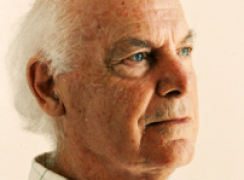| SPIRITUAL
TRAVEL.ORG Travel in the Spiritual Worlds |
SPIRITUAL
GEOGRAPHY The Landscape of Spiritual Travel |
 |
Once there is acceptance that the soul may be able to leave the body and travel to other places prior to physical death, the question arises: "Where can the spiritual traveler go on these inner journeys?" In spiritual travel, states of consciousness (the places the traveler may visit during spiritual travel) may best be understood using the metaphor of geography. We discuss the degrees of awareness associated with different states of consciousness on the page titled The Hierarchy of Dreams but on this page, we first subdivide the universe into a broad ontology or set of worlds. When the subject of spiritual geography is studied and debated, the goal is to produce an accurate map of consciousness. There are spiritual groups that develop these maps of the spiritual universe such as the Theosophical, Tibetan Buddhist, Sufi, and Indian Sant Mat Traditions. They do this in part to help their followers understand the world or plane from which a given experience originates by plotting its location on their cosmological map. It is probable that early Christians had such spiritual maps as is evident in the bible where Saint Paul mentions a man who was rapt up to the third heaven in 2nd Corinthians 12. A third heaven strongly implies a first and second heaven which differ in some way, and a map or hierarchy that describes the relationship of each heaven to the others. Many times, religious groups also develop such maps because they are interested in describing where the soul can go after death. In general, the author has not found these maps to be of much help in understanding my own out-of-body experience. Here, I suggest a relatively simple three level hierarchy of spiritual travel experience which I have found to be more useful. The basic areas the spiritual traveler may visit while outside the physical body are the physical world, the psychic worlds, and the spiritual worlds. The physical world is the easiest to explain since it appears much as it does when looked at from an everyday physical perspective. While people in an out-of-the-body state are not restrained by gravity, and cannot interact with physical objects because they are not embodied, many of the visual and auditory elements of the experience remain the same. A good description of a travel experience in the physical world is from the Sioux medicine man Black Elk who fell unconscious during breakfast one day and had the experience described on the page titled Black Elk's Description of Crossing Over the Atlantic . There are also a number of detailed descriptions of spiritual travel in the physical world in the Near-Death Experience section of this web site. More difficult to describe are the psychic worlds which are so varied that one can talk about them only in the most general terms. They consist of such abstract elements as imagery, sound, thought, memory, identity, emotion, and different degrees of limitation. On the near end of the psychic spectrum, there are areas that are all but identical with everyday experience in the physical world. On the far end, there are, for instance, radical alterations in personal identity involving immersion of the soul into powerful environments composed of raw emotion. The soul can also, for example, encounter exotic areas where it becomes aware of some of the collective memories of past civilizations. These psychic areas can also range from very positive, beautiful, and joyous to very negative and hellish. We can speak of dream environments as the most common and familiar examples of a psychic world. I call these areas psychic because thought has great power to build, mold, and change them. For instance, when the traveler enters dream environments in full consciousness, he or she discovers how plastic and malleable they can be on one hand and how real and physical they appear on the other. This site contains many examples of the psychic states encountered during spiritual travel. Even more difficult to describe are the spiritual worlds. These are the areas of mystical experience. The most accurate descriptions are the poetic ones that attempt to describe infinite joy, light, love, knowledge, bliss, or emptiness. Slightly below the mystical areas are the places where the mystical light is reflected and refracted. These are the paradises of jeweled skies, rivers of nectar, mountains of flowers, and similar kinds of organic and crystalline imagery. Here, there are also divine currents of music in celestial oceans of sound. The deities with their vast awareness and various attributes are complex standing waves, eddies, or vortices on the surface of this vast ocean of consciousness. They preside over their individual paradises and control access to them. An example of such a paradise is provided on the Land of Bliss page to give a clearer view of these heavenly worlds to the reader. The sections on Sacred Light and Sacred Sound describe these spiritual areas. These mystical states are the ultimate goal for the true spiritual traveler.

No comments:
Post a Comment